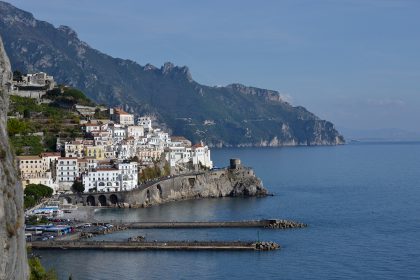AMALFI

The heart of the coast, and a UNESCO World Heritage Site since 1997.
Amalfi dates back to the 4th century AD, when Roman refugees settled here. It reached its apex in 839 AD, when it declared its independence from the Byzantine Duchy of Naples, and became the first Maritime Republic in Italy. For centuries it was the only link between Europe and the whole of the Byzantine Levant. The first code of maritime laws, the Amalfian Laws, were compiled here, and remained in force until the 16th century. Amalfi also pioneered the use of the compass, and circulated its own currency, the “tarì”. Amalfi’s unique charm has always attracted artists, writers, painters, directors, and even one of the twelve apostles, saint Andrew, who has a 10th century cathedral dedicated to his honour, where his relics are housed in the crypt. Amalfi is enclosed by a natural amphitheatre where the Canneto river runs through the lush Valle Delle Mulini: water-powered paper mills transformed rags into precious paper. A 13th century paper mill now houses a fascinating paper museum.











